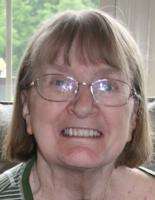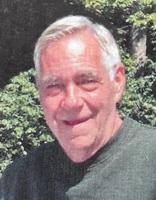The words “Apollo 11” stir optimism in me.
I was an elementary school kid growing up in Vigo County when Neil Armstrong put the first footprint on the moon on July 20, 1969. So much seemed possible. For those 22 hours Armstrong and Buzz Aldrin spent on that glowing sphere in our night sky, the world — just as John Lennon later imagined in song — lived as one. We drank Tang out of solidarity with the space pioneers, declared to our teachers that we would become astronauts, and watched the impossible happen on black-and-white TVs.
Three decades earlier, Jim Lovell was an elementary schooler growing up in Terre Haute. He actually became an astronaut and made history as commander of the Apollo 13 mission in April 1970, guiding his crew through a disastrous equipment malfunction, which prevented their landing on the moon, and safely back to Earth. Tom Hanks portrayed Lovell in the 1995 movie, “Apollo 13.”
But the previous summer, Lovell served as the backup commander on Apollo 11. If Armstrong experienced illness or injury, Lovell would’ve been the guy descending the ladder onto the moon first. That possibility wasn’t far-fetched. Lovell had replaced Michael Collins because of a medical problem on Apollo 8. And, on Apollo 13, Jack Swigert wound up on the crew when the flight surgeon grounded fellow NASA astronaut Ken Mattingly because of his suspected exposure to German measles. So Lovell filling in for Armstrong was always considered possible.
“Yes, very definitely,” Lovell said in a telephone interview last week from his communications business in Lake Forest, Ill.
In fact, Lovell said he originally was slated to command the flight but switched turns with Collins after their Apollo 8 shift.
Lovell spent early 1969 preparing, right alongside Armstrong, Aldrin, Collins and the other backup crew members.
“As we prepared for the flight, being the backup commander, I essentially duplicated what he did with regards to what they would do on the lunar surface” Lovell explained. “I had pretty much experienced on Apollo 8 how to get to the moon, so I didn’t really worry about that. I was just looking at the lunar surface activities, and that ended up [continuing] all the way towards the liftoff time. The last month or so, we gave all the simulator time to the primary crew. Then after he took off, I was part of the Mission Control team that monitored his activities when he was on the lunar surface.”
On July 20, Lovell and the rest of the planet heard Armstrong utter those iconic words, “One small step for man, one giant leap for mankind.”
Even though he was Armstrong’s understudy, Lovell hadn’t planned his words if he’d made that initial lunar step.
“I never gave that much thought,” Lovell said. “Usually, those things are done just days before the flight. And had I replaced Neil, I probably would’ve took some time or asked somebody what would be appropriate to say. And, certainly what he did say was very appropriate.”
Lovell made four space trips but never walked on the moon. Apollo 8, the first voyage to the moon, orbited that mysterious celestial body but didn’t land. Apollo 13 was Lovell’s best chance, but the harrowing mechanical breakdown forced the team — onboard and back in the U.S. — to scramble to find a Plan B to get the trio back home. That lost opportunity remains a regret for Lovell, now 86.
“Yeah, that was a disappointment for me,” he said with a sigh. “A few years after the [Apollo 11] flight, my whole idea was, if I couldn’t be the first guy to land on the moon, at least I’d be somebody to land on the moon.” Alas, it wasn’t to be, though his leadership on Apollo 13 etched Lovell as a legendary hero nonetheless.
It was heady stuff for a guy who moved to Terre Haute as a 10-year-old after his father died in a car accident. When Lovell’s mother took a job in Oregon, he came to live with an aunt and uncle on Jackson Street in Terre Haute’s Edgewood Grove neighborhood. His cousin, who graduated from Rose Poly (now Rose-Hulman Institute of Technology), served as a counselor at Camp Krietenstein, so Lovell joined the Boy Scouts. He recalled tripping on the steps of a cabin and breaking his arm on the first day at camp. He also attended Weldele School.
Though Lovell moved to Milwaukee two years later when his mother returned, his short stay in Terre Haute left an impression on him. “Tell my friends down there in Terre Haute on the banks of the Wabash that I miss them quite a bit,” he told me in that interview Thursday. “I enjoyed my time down there.”
He sounds quite down to earth, pardon the pun, despite all of his out-of-this-world experiences. The photographs of Lovell and his fellow Apollo astronauts training for the historic Apollo 11 flight reflect the enthusiasm of that moment in time. NASA was fulfilling a challenge issued by late President John F. Kennedy to put a man on the moon by the end of the 1960s.
Seeing Armstrong make that vow a reality inspired Lovell, just like all of us. He described that instant as many Americans would.
“It’s one of pure joy,” Lovell said. “We had worked hard to honor President Kennedy’s commitment in putting [forward] more than just a project of scientific exploration. It was really a technical challenge to the American people that we have the ability and the resources to put a man on the surface of the moon and get him back safely before the end of the decade.”
From the shadows of the global event, Lovell watched Armstrong, Aldrin and Collins carrying out the mission. “I think they did an excellent job in the amount of time they were there,” he said. “Their job was to land and quickly get some lunar material and get back in. This was a flight to honor President Kennedy’s commitment that we could actually do it, and we did it.”
It’s heartening also to know how deep Lovell’s affection is for little Terre Haute, too.
On Nov. 20, 2003, he returned here to speak in Hulman Center as part of the Indiana State University Speaker Series. Then-series chairman Mark Edwards drove to pick up Lovell at the Indianapolis airport and brought him to town. Unaware that Lovell had actually lived here briefly, Edwards was surprised when the famed spaceman asked if they could drive by his “old house in Edgewood Grove.” Once Lovell told him the story, they steered into the neighborhood and found the house where Lovell lived, at 117 Jackson St. Lovell was giddy.
“Here was a guy who’d been to the moon a couple of times, and he said, ‘Hey, there’s my room. That’s the window,’” Edwards recalled Friday. Lovell called his wife on his cellphone immediately and gushed, “You’ll never guess where I am right now — my old home!”
Terre Haute was a small step for that man, but obviously an important one.
Mark Bennett can be reached at 812-231-4377 or mark.bennett@tribstar.com.






























Commented
Sorry, there are no recent results for popular commented articles.